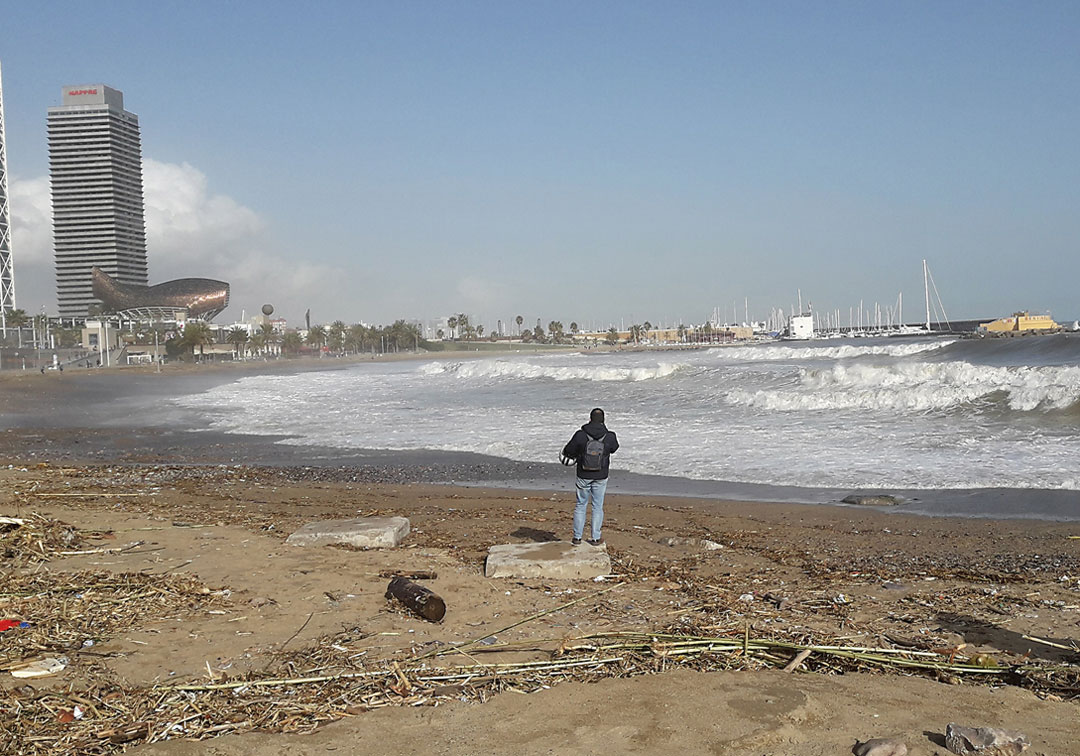Warming of the Mediterranean has increased in recent decades.
- Mètode
- May 19th, 2021

María José López García, full university professor of Physical Geography in the Department of Geography at the University of Valencia, summarises thirty-five years of satellite observations that have confirmed the trends appointed in previous studies.
Global warming is particularly affecting the oceans and seas. In the Mediterranean Sea, oceanographic and meteorological records taken in situ together with the most recent satellite observations show an estimated global warming of between 0.6 and 1 ºC over the last three decades. In this article, professor María José López García analyses 35-year series of monthly thermal images in the western basins of the Mediterranean. The data indicate an earlier and more intense summer season: summers are longer and more intense and the months of June and July record the highest warming rates, with increases of 0.6ºC/decade.
The Mediterranean, an “ocean in miniature”
The Mediterranean, a semi- enclosed sea framed by three continents, is a unique setting. It occupies only 0.7% of the world’s ocean surface and 0.3% of the water volume, but has been considered as a “miniature ocean” by many authors, a perfect laboratory for studying climatic and hydrological patterns, as many of the phenomena observed in the oceans also occur in the Mediterranean. The configuration of its basin, with great topographic contrasts, and its intermediate position between temperate and subtropical climates make this sea a particularly sensitive area, which is why it has been identified as one of the climatic change hotspots.
There is now agreement in the scientific community about global warming attributed to the increase in atmospheric CO2, especially evident in the last four decades. The Fifth Assessment Report (AR5) of the Intergovernmental Panel on Climate Change (IPCC) indicates a global warming of 0,85ºC over the period 1889-2012 (IPCC, 2013). At a global scale, it has been estimated that between 1970 and 2010 the oceans have accumulated more than 90% of the energy increase in the climate system. Global warming is evident in the surface layer down to 75m, where an average rate of thermal increase of 0,11ºC/ decade has been calculated.
What do observation satellites tell us about the Mediterranean?
Since the 1980s, thermal images obtained by the Advanced Very High Resolution Radiometer sensor on board NOAA satellites have provided a continuous, synoptic view that complements in situ records. The radiation recorded by the sensors is considered representative of the sea surface temperature, a key parameter in climate studies. Over time, other sensors as the Moderate Resolution Imaging Spectroradiometer (MODIS) have been added, allowing accurate derivation of the sea surface temperature and other oceanographic parameters.
In the early days of space remote sensing in Spain, the doctoral thesis Balearic Sea Temperature from Satellite Images (López Garcia, 1991), a product of the collaboration between the Department of Geography and the Remote Sensing Unit of the Thermodynamics Department of the University of Valencia, showed the potential of thermal images for the knowledge of the hydrology of the Mediterranean. Thirty years later –now that the viability of the images has been amply proven- the availability of image series of sufficient quality and length, and the possibility of contrasting the results with data obtained by other authors, have made it possible to confirm the trends indicated in previous publications.
The analysis carried out in the western basins of the Mediterranean shows a rapid warming in the last three decades, with an average rate of 0.03 ºC/ year that reaches higher values depending Mediterranean region analysed. Warming in the peninsular Mediterranean is occurring mainly in the spring-summer and autumn months, and there is a clear trend towards an earlier, longer and more intense summer.
The consequences of the warming of the Mediterranean on aspects such as sea level rise, the possible alteration of marine circulation patterns, the abundance, distribution and structure of marine species or the frequencies and intensification of atmospheric processes as the DANA (Isolated High Level Depressions) are the subject of interest and research by the scientific community. While the causality and attribution of these consequences to climate change remains difficult to discern, there is a growing consensus that warming is not a future projection but a clear reality.
Full article in Mètode: López García, M J. (2021). How much warmer is the Mediterranean becoming? Thirty-five years of satellite observations. Mètode Science Studies Journal, 11.
https://doi.org/10.7203/metode.11.16693
















